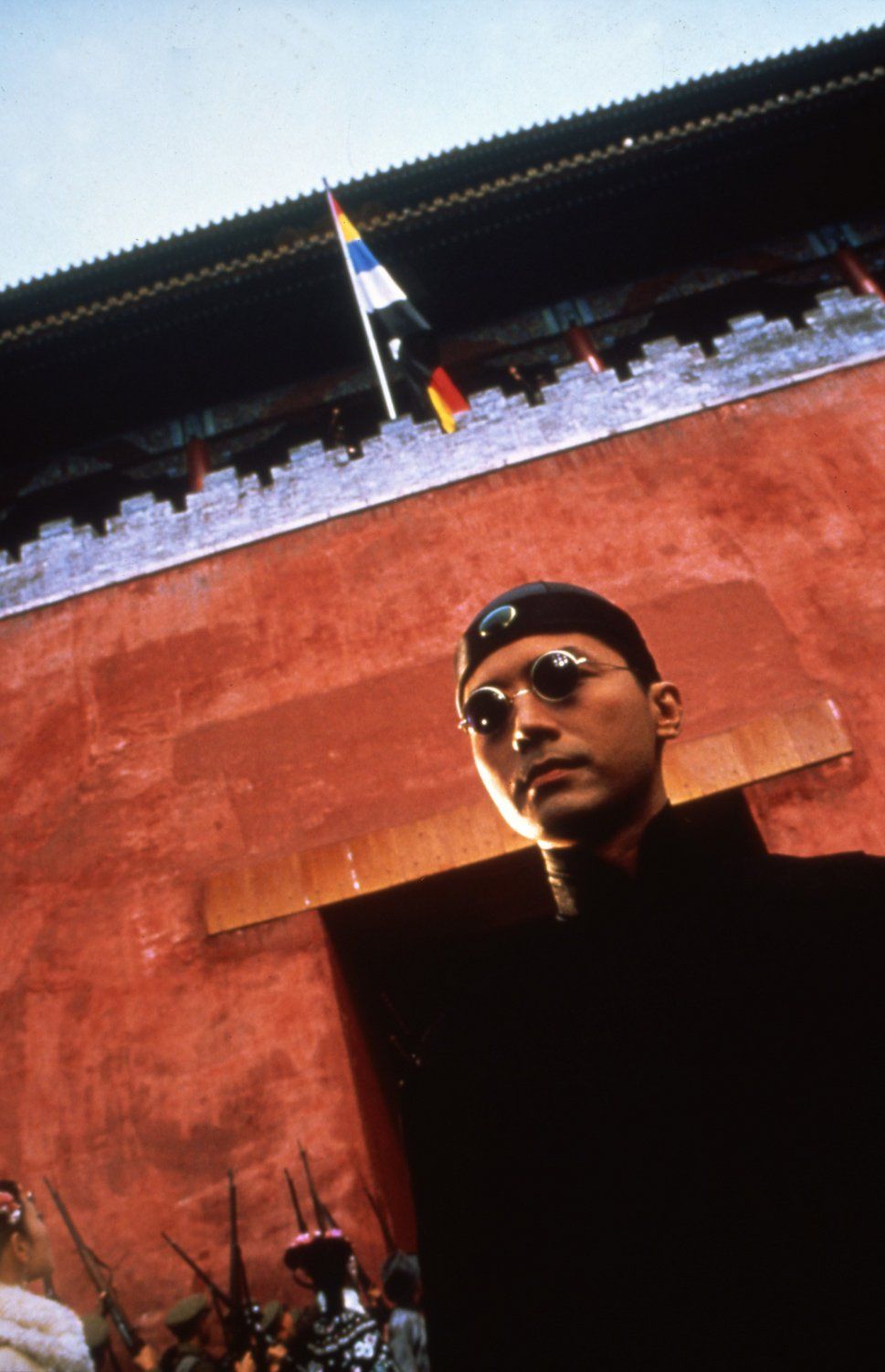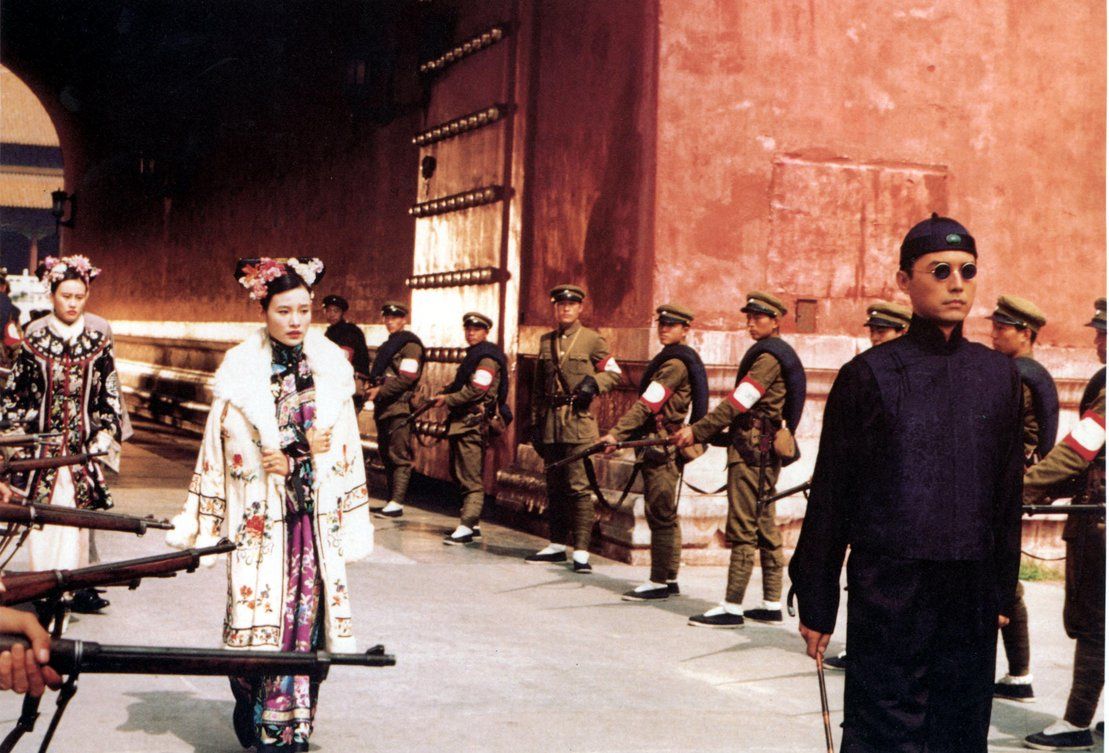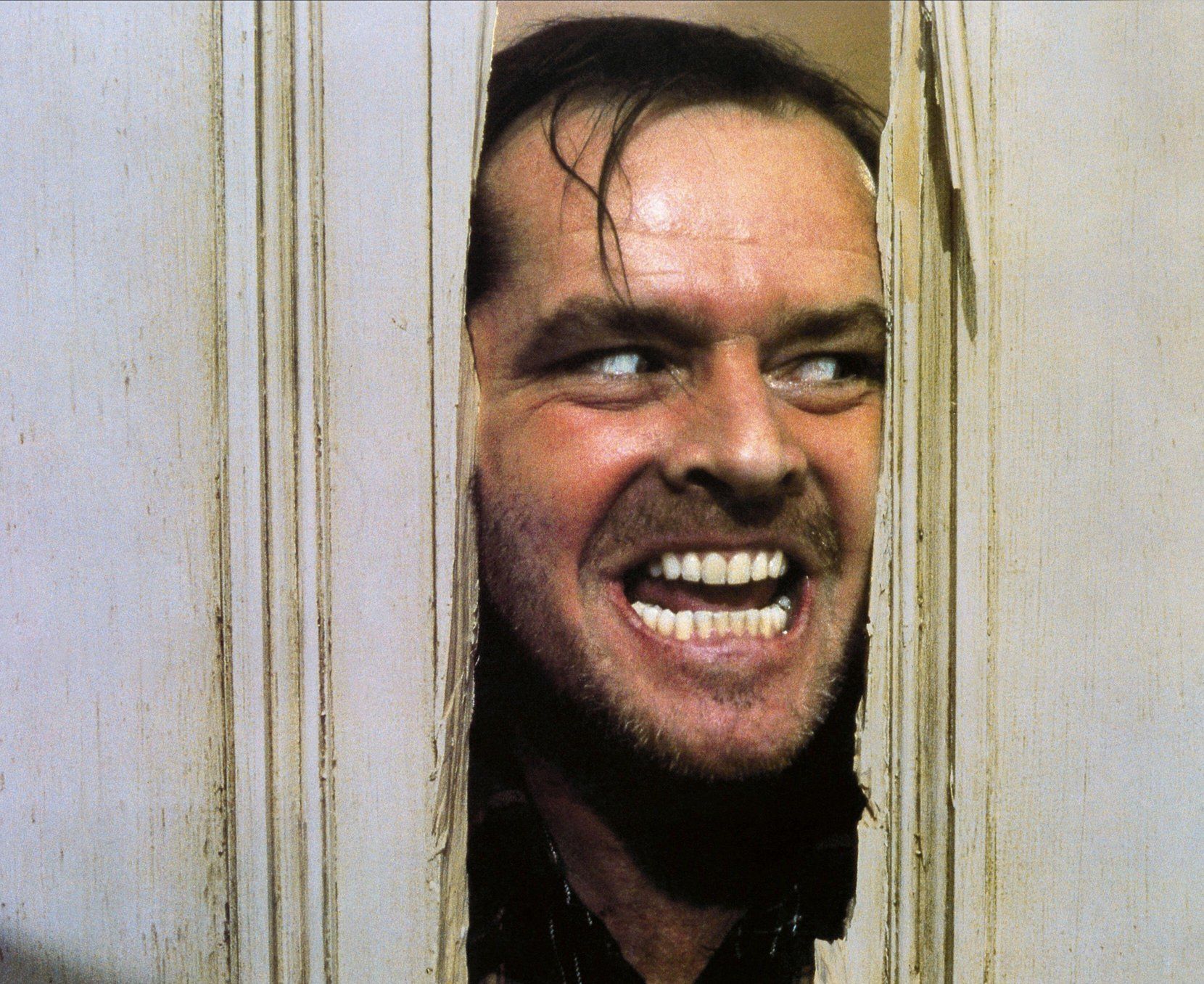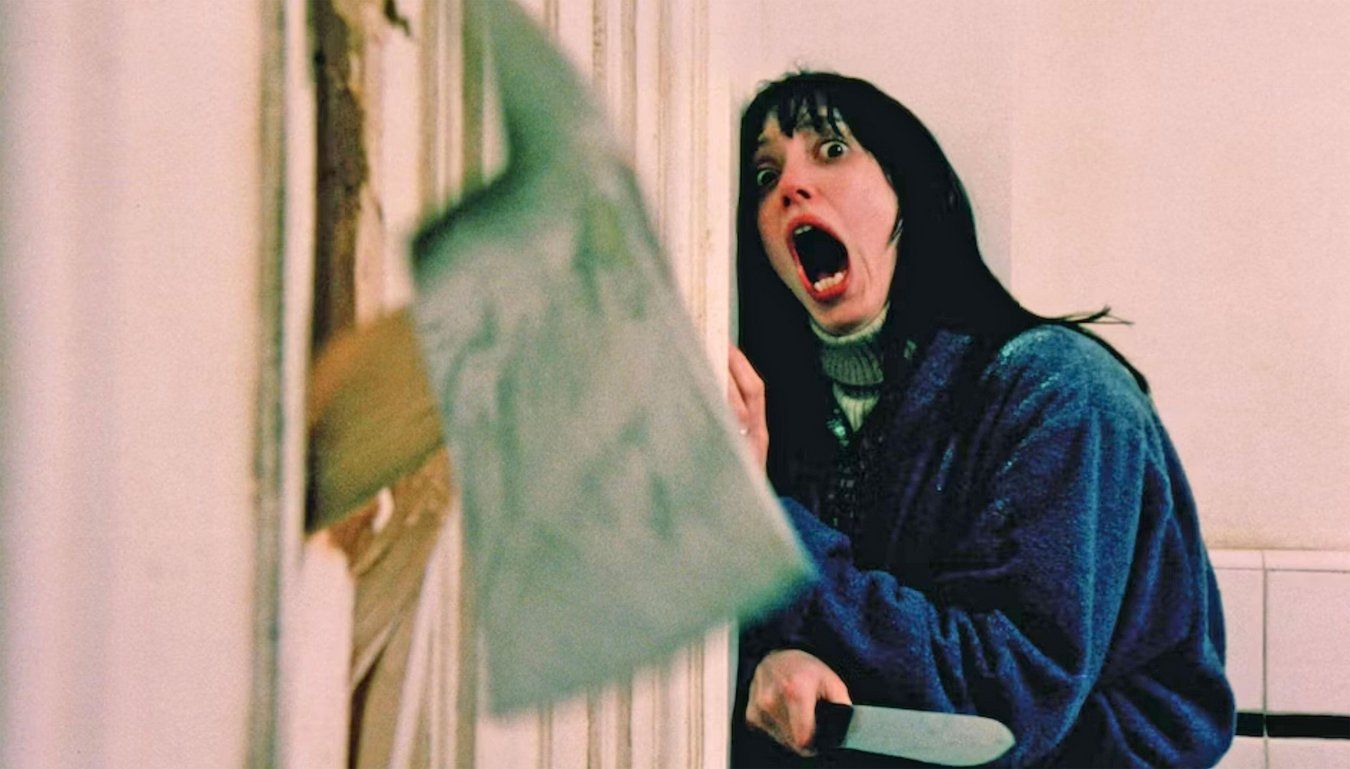Life between two Worlds: Doors & Metaphors in Cinema
The Last Emperor, 1987, Director Bernardo Bertolucci
Photo by, Recorded Picture Company.
“Go and open the door.
Even if there’s only
the darkness ticking,
even if there’s only
the hollow wind,
even if
nothing
is there,
go and open the door.
At least
there’ll be
a draught..” Czech poet Miroslav Holub (1923-1998) - “The Door”
At ten o'clock in the evening, the mother passed by the living room to grant her son his bedtime wishes, ordering him not to stay up too late playing video games. Before she left, she asked him to make sure the door was locked from the inside. The boy did not listen to his mother's advice, stayed up past midnight, and finally fell asleep, not doing what she asked him to do. The door would remain open. Would the monsters of the night, with all their ferocity and evil, receive a cosmic message? Would it be a quiet night? Grandmothers' tales, literature, and our imaginations that fear the unknown, and behind all this, cinema, all say that it will not be, and that evil lurks from behind this unlocked door.
The door is perhaps the most important element of our daily life that has philosophical, intellectual, cultural, and psychological dimensions and implications. Our relationship as humans with the door goes far beyond its physical boundaries. We may not be able to contemplate the door in our lives as we encounter it daily, but thinking about it will automatically lead us to all kinds of ideas that we have explored throughout our lives, be it within the realms of religion or mythology, or simply within the breadth of all of human history, past, present and future. The door has remained steadfast in front of it all, rife with meanings.
In the foundational book (Ethnologie de la porte/ Ethnology of the Door), Pascal Dibie discusses doors and the human relationship with them, starting with myths and the metaphysical, through the presence of the door in religious rituals and popular celebrations, and ending with psychological meanings. In the introduction to the book, after reviewing the terms used for “door” in different languages around the world, he says: “Here we are in an endless game of words, shaped by imitation and metaphor, where the meaning of “door” was invented little by little and then solidly built, a meaning based on the rule of necessity: the necessity of entering or exiting our shelters.”
Cinema has always reflected humanity, our visions and thoughts, our fears and pains, our biographies and stories, and this is what made the door present with its various meanings and philosophical implications. From the psychological uses of the door as a source of security - the absence of which evokes fear in horror films - to the doors that separate our real world from the worlds of secrets and the metaphysical in adventure and science fiction films, and even the more realistic doors that reflect the same meanings in our lives, where the door is a separator between what is internal, intimate and private and what is external, distant and unlike us. There is also the metaphorical use of doors, which are not doors, but passing through them is breaking the wall, like the experience of American director Woody Allen, who always passes through a back door, sending his characters from the world of cinematic fantasy to the world of material reality.

Ethnologie de la porte/ Ethnology of the Door
If doors are, in essence, a means of separating two contradictions, an internal one with one meaning, and an external one with a completely different meaning, then the most extreme example of this contradiction is present in the gates of the Forbidden City in Beijing, which was the residence of the Chinese emperor for nearly five centuries, with 42 emperors from the Ming and Qing dynasties succeeding him. Many legends have been woven around this city, and its reality is not devoid of magic as well. It is the city that even in its name “Forbidden” we sense an aspect of hidden secrets and unknown worlds.
The story of the city and its last emperor, which is more amazing than fiction, preoccupied the mind of Italian director Bernardo Bertolucci until he was able to start work on his iconic and important film, The Last Emperor (1986). The film achieved great success, perhaps thanks to the exotic story, or to Bertolucci’s distinctive style in cinematic directing, however the amazing contrast between what is inside the Forbidden City with its towering walls and lavish life of the emperor, and the outside, where ordinary, poor people live ordinary lives and are afflicted with famine and killed by disease, was never lost on director, and there was nothing better than the door to represent this dichotomy.

The Last Emperor, 1987, Director Bernardo Bertolucci
Photo by, Recorded Picture Company
After the teenage emperor Pu Yi (John Lone) succeeds in his studies, his teacher Sir Reginald Johnston (Peter O'Toole) fulfills his promise and presents him with a bicycle. Delighted with the gift he has worked so hard to obtain, the emperor takes his new bicycle and rides it around his Forbidden City, discovering corners he has never been to before, and meeting workers and servants who toil away day and night to serve him, whom he has never seen before in his life. His short adventure ends at one of the city's gates. It is a scene that, despite its simplicity, encapsulates many meanings. We see the emperor heading towards the huge door that was open, and outside he sees people walking around Beijing; porters, street vendors, and animals pulling carts. As he walks out into the long corridor, the guards run to close the door. The emperor must remain inside, while people are forbidden to enter or even see their ruler. The huge door was the dividing line between two contradictory worlds, the elements of each must never intersect or meet, and by closing it everything would remain the same.
Bertolucci will return to use the door again with all its meanings when the emperor leaves his Forbidden City, banished forever after the revolution overthrew him. He and his family will exit through the door, and in the narrow corridor leading outside, soldiers will line up on both sides, and the emperor will walk among them defeated, bidding farewell tothe only world he knew for a new world he had never seen before in his life. The great, tall door will be a symbol of this end, amplifying the overall feeling. We see the emperor, small and tiny, passing outside as if he were nothing. A crossing that heralds the beginning of a new chapter whose end will only be written with the death of its owner.

The Last Emperor, 1987, Director Bernardo Bertolucci Photo by, Recorded Picture Company
In a 2013 psychological study conducted by the Japanese company Rakuten, which measured viewers’ increase in heart rate to determine the most terrifying films in the history of cinema, The Shining (1980) by director Stanley Kubrick, based on the novel of the same name by Stephen King, came in third place. However, the scene of the man who has lost his mind and turned into a crazy psychopath, Jack Torrance (Jack Nicholson), breaking down the door with an axe, came in first place as the most terrifying scene in the entire history of cinema, as the heart rates of viewers increased by 28.8%, a difference of more than 4% from its closest competitor.

THE SHINING, 1980, Warner Bros. Film with Jack Nicholson and Shelley Duval, directed by Stanley Kubrick.

THE SHINING, 1980, Warner Bros. Film with Jack Nicholson and Shelley Duval, directed by Stanley Kubrick.
This violent psychological horror in the scene is achieved because of the symbolism that the door has for the audience. The door represented the safety that the wife, Wendy (Shelley Duvall), was trying to hide behind, running from her murderous husband and attempting to sneak out the window to complete her escape to safety. All the while, he was walking with slow, unsteady steps towards the bathroom where she was hiding.
Kubrick was very clever in designing the scene, as the violent and somewhat slow smashing of the door by an axe carried by the evil hand made the audience reach their highest levels of fear,
as the source of imagined security began to collapse before them piece by piece, and it all fell away as Jack Torrance stuck his head through the hole he made in the door and he yells maniacally : “Here’s Johnny!”.
The door is the weakest point of a barrier or wall and its collapse heralds the destruction of that barrier. In the scene, when the door is destroyed, all the inner security turns into pure terror, and the bathroom that was an escape turns into a trap. The dividing line is the door, and upon it and its meanings, all the elements of the scene are built.
There is a door that we can describe as magical that separates the world of reality from the world of fantasy. In cinema, this imaginary barrier is known as "metacinema", or “breaking the fourth wall”, and it refers to those moments when the characters stop playing their assigned role in the world of fantasy to address the audience directly through the camera. Overcoming this barrier began in literature very early on through the novel Don Quixote, but in cinema this door was first opened by Alfred Hitchcock, while Woody Allen adopted it in many of his works as his own distinctive style. The film Annie Hall (1977) marked the first time that Allen's characters crossed through that magic door. This was repeated in his film The Scarlet Rose of Cairo (1985), and in other films, including To Rome with Love (2012). Allen deals with doors and barriers with astonishing simplicity. He sees them as easy to penetrate, and therefore he always deliberately overcomes the walls, whether physical or metaphorical, and this is what gives a distinctive vitality to his characters, who usually remain stuck in the memory and live with their audiences for years.
Cinema not only opened doors to see the world with new eyes, but also took its audience on a path to understanding the metaphor behind the doors, which in some way gave deeper meaning to their existence.
* Qais Abdullatif is a film reviewer. https://twitter.com/QaisAbdullatif

ANNIE HALL 1977, film by Woody Allen starring Diane Keaton.


